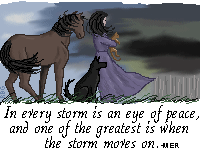As you may well already heard there's a large population
of pets in the US that are euthanased daily due to
over population.
What can YOU do to help?
Have your pet spayed or neutered at a young age, preferably
by the age of six months.
Not only will this help the pet over population but
it will help keep your pet healthy too!
Health Benefits of Spaying & Neutering Your Pet
Spayed & neutered pets have less tendency to roam & look for a mate.
By remaining close to home they have less of a chance of being hit by a car,
get stolen or lost & have a much lower occurrence of contracting
contagious diseases or being hurt by another animal.
In males, neutering decreases the chances of developing prostatic disease
and hernias, and eliminates the chances of developing testicular cancer.
It also reduces problems with territorial and sexual aggression,
inappropriate urination (spraying) and other undesirable male behaviors.
In females, spaying decreases the occurrence of breast cancer
(the rate goes down to almost zero if the spaying is done before the first heat cycle!).
It eliminates the chance of developing a serious and potentially fatal infection of the uterus
experienced by many mature unspayed animals (pyometra).
Spay surgery also eliminates the heat cycle and other complications that come with it such as
messy spotting (in dogs) and the attraction of all available males to your yard.
The simple fact is that spaying and neutering greatly
increases the lifespan of your pet and increases quality of life as well!
Many new clients want to bring in an 10 or 12 week puppy for their first visit
and have their puppy get "the works"
I very strongly believe that a pups first groom should be
as easy on the pup & the least frightening as possible!
After all, your pup will be visiting me every 4 - 6 weeks for a lifetime!
So I want your baby to enjoy being groomed!
For the first puppy visit I generally give a warm bath, fluff dry, clean ears & trim nails.
Clip the "sanitary" area, trim a bit in front of the eyes (if your breed requires this).
Trim the hair between the pads & round the feet (Again, if your breed requires this).
If at any point ANY of this is putting any undue stress on your pup, I will stop & continue with
the other areas of his or her grooming.
For the second puppy visit, I will attempt to do more trimming if you wish.
Again, I will not stress your pup, we can always work a trim into more than one visit.
In my experience most pups come in the second time ready for a bit more "standing still"
and a bit more trimming & clipping if required.
By third visit I can usually complete a full grooming with no stress to your pet.
Remember, I want your pup to enjoy grooming & you should too!
*Summer in Florida - Hurricane Season*
We all hope it doesn't happen to us, but with the fury of these storms
this summer, it's very possible any of us could be faced with
having to evacuate our home with our pets.
We are certainly finding this out here in Florida this year.
There are many important things to remember when you are faced
with evacuating your home due to storms.
PETS!
Please do whatever possible to NOT leave your pet at home if
you have to evacuate. Make arrangements early to take them with you.
There ARE hotels that will accept pets!
There are very few, but there ARE Red Cross Shelters that
will accept you with your pets too.
You MUST have your pet's current vaccination records
with you to bring them to a Pet Friendly Shelter.
If you have a friend that is in a non-evacuation zone,
this might be easier for you & your pets to go to.
Make plans early, KNOW where you will be able to evacuate to,
WITH your pets.
Remember to have plenty of pet food & WATER for your pets.
Have a CRATE or CARRIER. You may use it once, you may never use it,
but you WILL need it if you have to evacuate!!
Shelters will require them, you may even need it if you are staying at a friends house.
If you are evacuating with at cat or cats, remember to have either a disposable/portable litter box,
OR even a shoe box with some litter or shredded newspaper will do.
I find it best to have a crate big enough to put your cats in, with a litter box, food & water.
Be SURE to have a COLLAR & ID tag on your pets. Even if your pet doesn't normally wear a collar,
you NEED to have identification on them
just in case something does happen to separate you from your pets.
HORSES
Don't forget them too! Write your telephone number on them with either
a grease pen, or even lipstick will do.
Set them free in a fenced pasture that is free from trees or buildings.
I'm no horse expert, but this is the recommendation I am hearing from
the horse people that I know.
BIRDS & OTHER SMALL ANIMALS
My best recommendation is downsize! Get small bird carriers & small animal
containers or carriers. It isn't going to hurt them to be in a small
cage/carrier for a while.
Don't forget your fish tanks!
This is something I know little about, but working in a pet store
I hear everyone asking for battery operated equipment for tanks.
Get them, have them ready in case you lose power.
Take the time to make a list of what you need to keep your pets safe
during a weather emergency. Be prepared!
Stay safe & take care. Let's hope these storms are done with
us for this season!
